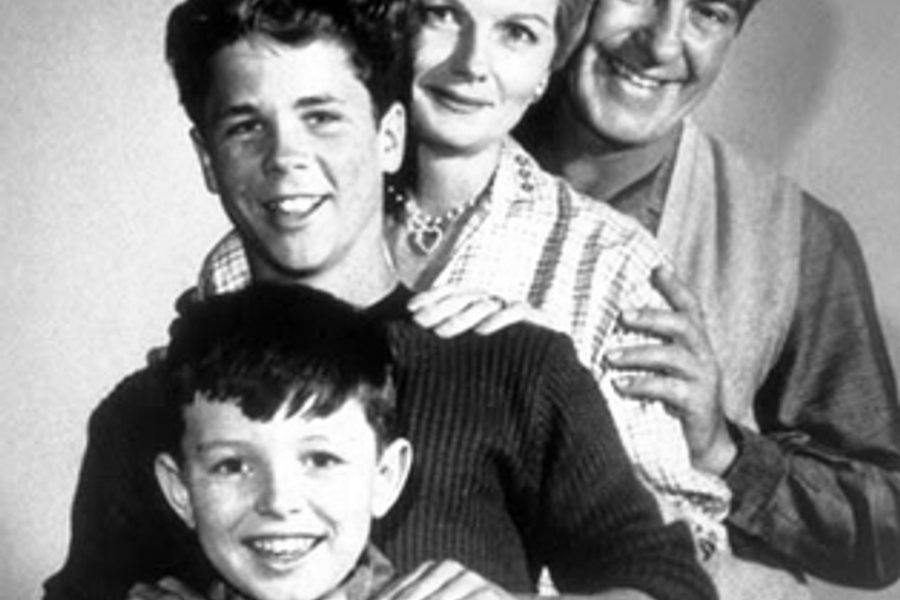
Does marriage make a difference for the economic prospects of future generations? A new study suggests the story isn’t so simple.
As the traditional nuclear family fades into history, we’ve entered the era of the “non-traditional” family: single parents, pairs of moms and dads, blended families, multi-generational households, grandparent caregivers. With a growing share of babies today born outside marriage, American society seems to be finally leaving behind the Leave it to Beaver model.
A new study by Pew Economic Mobility Project asks how family structure – a divorced or single-parent household versus a conventional married one – affects a child’s economic opportunities later in life. Society’s attitude toward divorce and single parenthood has become more open over the past few generations, but has our economy?
It’s easy to assume that divorce or single-parenthood would lead to some hardships, and Pew did find a link between marital status and socioeconomic advancement across generations. But the outcomes are also heavily influenced by race and class factors, which persist among poor households whether children grow up with one parent or two.
For children who start at the bottom third of the economic ladder, Pew found, “only 26 percent with divorced parents move up to the middle or top third as adults, compared to 42 percent of children born to unmarried mothers and 50 percent of children with continuously married parents.”
In terms of “absolute mobility,” or the potential to rise relative to their parents’ income level, divorce does not have a clear impact on children’s mobility:
Among children who start in the bottom third, 74 percent with divorced parents exceed their parents’ family income when they reach adulthood, compared to 90 percent of children with continuously married parents.
Still, the study concluded:
Perhaps surprisingly, there is no evidence that being born to an unmarried mother reduces upward absolute mobility from the bottom third of the income distribution — the rates for those children and for children with continuously married parents are statistically indistinguishable.
When you slice the data by race, a different picture emerges. Divorce appears to make a bigger difference for black children’s future prospects.
Among African American children who start in the bottom third of the income distribution, 87 percent with continuously married parents exceed their parents’ income in adulthood, while just 53 percent of those with divorced parents do.
Among white children who start in the bottom third, about the same proportion of adult children exceed their parents’ income regardless of whether their parents were continuously married (91 percent exceeding) or divorced (92 percent exceeding).
Pointing out that “family structure can explain only some of the differences in economic mobility rates between African Americans and whites,” the study raises intriguing questions about how social policy interacts with parents’ life choices.
The sweeping welfare reforms of the Clinton era continue to reveal the ramifications of using welfare to impose certain social norms at the expense of those who don’t fit the mold. As Kate Boo explained in her trenchant 2003 New Yorker article “The Marraige Cure,” the supposed correlation between marriage and economic well-being became perverted into the rationale that promoting marriage could reduce systemic poverty.
The “reforms” targeted urban black single mothers who were stereotyped as antithetical to the “traditional” family: degenerate, shiftless women who couldn’t stop having babies. The result was a national crusade to push impoverished single mothers simultaneously into the labor market and the marriage market, for better or worse.
To antipoverty and racial justice activists, the pro-marriage credo has simply repackaged the old blame-the-poor canard in the rhetoric of “family values.” In fact, poor single mothers have been systematically locked out of the social privileges that their middle-class married counterparts typically take for granted. Welfare rights activists since the 1960s have shown that policies intended to relieve poverty end up punishing women for not being June Cleaver.
In addition to the patriarchal conservatism inherent in pro-marriage ideology, women face practical barriers to getting hitched: Black women especially may have trouble finding long-term male partners in communities devastated by mass incarceration. Not to mention, some old-fashioned types see marriage as a matter of conjugal love rather than social engineering. Go figure.
Despite the talk of “personal responsibility” in welfare policy, the real barriers poor single mothers face are rooted in poverty itself. According to a 2002 policy paper by Stephanie Coontz and Nancy Folbre:
Non-marriage is often a result of poverty and economic insecurity rather than the other way around. The quality and stability of marriages matters. Prodding couples into matrimony without helping them solve problems that make relationships precarious could leave them worse off. Two-parent families are not immune from the economic stresses that put children at risk. More than one third of all impoverished young children in the U.S. today live with two parents.
Pew doesn’t directly critique welfare reform’s legacy, but the research does point to policy changes that could help break the cycle of intergenerational poverty. The Earned Income Tax Credit, for instance, has helped lift millions of children out of poverty through targeted income supports. Paid family leave time, subsidized child care, and career training and unemployment insurance programs that recognize challenges unique to working single parents, would help move non-married families toward long-awaited equity.
Regardless of what you think about the institution of marriage, there’s no justification for forcing children to pay an economic penalty for their parents’ decision to divorce or remain unmarried. And a parent’s decision not to tie the knot shouldn’t be an economic shackle on the next generation.
While our concept of the family has grown and diversified since the days of Mrs. Cleaver, for households striving toward advancement, our labor market and social policy remain stuck in the past.
Michelle Chen is a contributing writer at In These Times and The Nation, a contributing editor at Dissent and a co-producer of the “Belabored” podcast. She studies history at the CUNY Graduate Center. She tweets at @meeshellchen.








